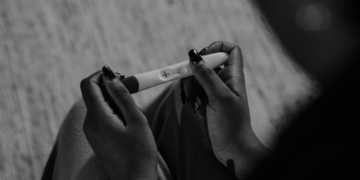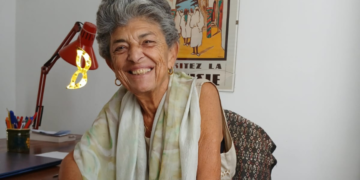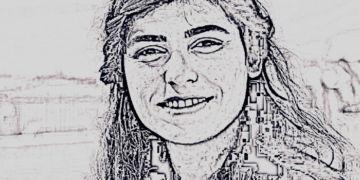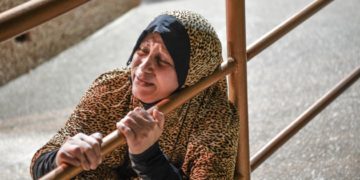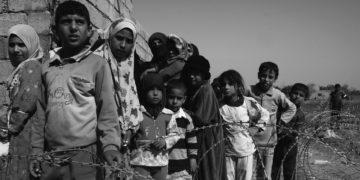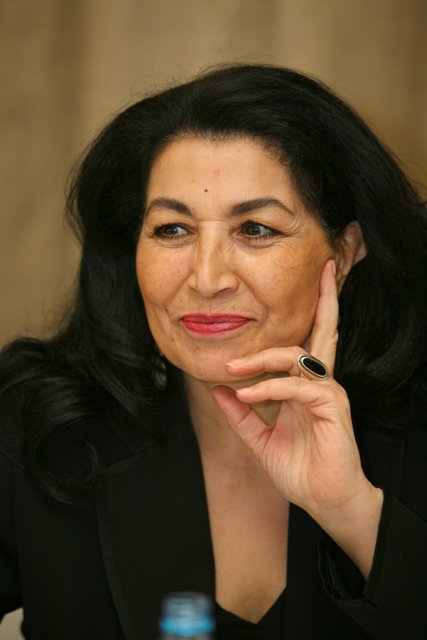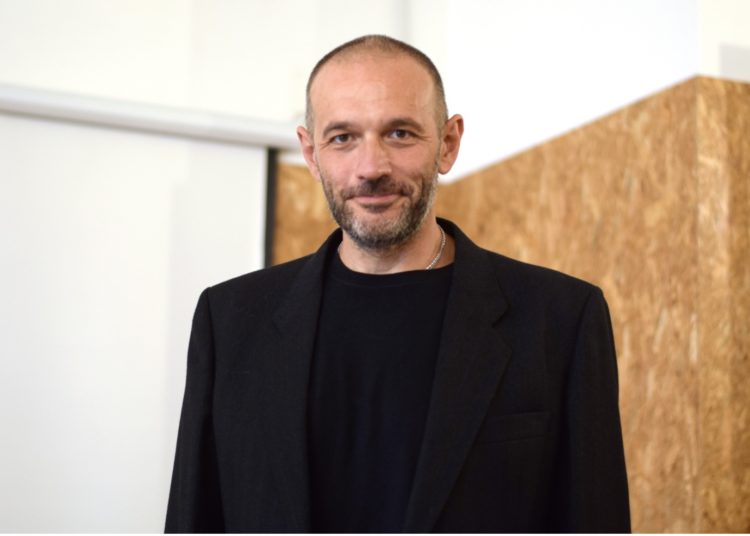This post is also available in: Français (French) العربية (Arabic)
You are one of Tunisia’s historic feminists of universalist tendency, those who began to campaign at the end of the 70s in the Tunisian Association of Democratic Women. What did you learn from this movement?
By way of response, allow me to paraphrase Simone de Beauvoir: “One is not born, but becomes a feminist.” In fact, I came to feminism long before I joined ATFD, through my reading, the vagaries of life and injustice, and, like many activists of my generation, through my critical commitment to a left-wing party. The Tunisian Association of Democratic Women enabled me, however, to concretize this identity, to set goals for myself and chart a course to try and put an end to patriarchal domination and the subordination of women. Above all, the movement has enabled me not to do this alone, but with all the women who came before me, those who have held my hand and those who will follow. It helped me turn my anger, my revolt into a powerful, collective force, often in a spirit of sharing, complicity, and joy, and sometimes also in conflict, tension, and divergence—but that doesn’t scare me. It’s proof of our richness and an expression of our diversity and plurality. The feminist movement is not a long, quiet river. Like any social movement, it’s plagued by questions, challenges, and debates, all of which contribute to its dynamism and vitality and nourish its capacity to resist, on a daily basis, and to constantly dissect the world in which we evolve.
The ATFD also enabled me to link feminism to the political struggle for rights, justice, and democracy, to oppose any unjust political and social order that justifies the oppression of women. Feminist demands have always been strongly linked to the fight for democracy, because feminism is not just about women; it benefits everyone—men, marginalized groups, and all sections of society. Militant action at work has made the slogan “the private is political” a reality. This is how the Association has brought supposedly private issues, such as sexual violence and sexual and reproductive rights, to the forefront of debate, fighting against dominant sexual norms and the various stigmas and kinds of discrimination they produce. For me, the Tunisian Association of Democratic Women has made multiple and considerable contributions. A different way of looking at the world, a form of self-sacrifice, a willingness to work to improve women’s lives and ultimately contribute to real societal change.
Why has the ATFD been unable to rejuvenate its ranks, particularly since the 2011 revolution?
It is certainly below our expectations and ambitions, but there has been some generational renewal. Just take a look at the meetings and events we regularly organize, at the constituent members of the last two elected executive boards. Young women are well represented—around a third of our board members are under 30. And we shouldn’t forget that the feminist landscape has become much more diverse since the 2011 revolution. Several associations that share our same ideals have sprung up and attracted a considerable number of young activists. The offer has become more diverse; that’s a fact.
Younger generations favor online activism and social media as tools for mobilization, while older generations may value more traditional methods like press releases, demonstrations, and rallies. Young people are also more likely to resort to performance and art to support feminist struggle and the fight for equality.
That said, building a new generation of women is an essential challenge for the entire feminist movement, in Tunisia and elsewhere. As such, it is one of the strategic objectives of the Tunisian Association of Democratic Women. Efforts are currently underway to bring in new members, like relaunching the Université Féministe Ilhem Marzouki (UFIM), whose role is to provide training, pass on knowledge and build capacity, revitalize youth clubs in Tunis, and ensure a more flexible processing of membership applications. These are just some of the steps the association is pursuing to attract more women to the movement and bring about a new generation of feminists who share its vision and values.
Do you think there’s a generational divide in Tunisia today between the old feminists and those who subscribe to an intersectional and queer feminism?
I wouldn’t call it a divide, but there is definitely a change of perspective and approach. They have new feminist modes of action, struggle, and protest. I think this idea of a generational divide between “historic” feminists and those who arrived later needs to be more nuanced. What’s certain is that change is underway, as we are entering a new stage—I’d even say there’s a new Feminist Wave in the making. While the development of an intersectional and queer approach has proved suitable to many young feminists, I wouldn’t say there’s a divide—the reality of the movement belies it. The positions of historical feminists and queer feminists are not as irreconcilable as they may seem.

What distinguishes them from each other?
There are several issues, some older than others, that are the subject of debate within the feminist movement today.
First, the question of mixity/ non-mixity. Non-mixity among feminists is often questioned by the new generation of activists, who are increasingly involved in and identify with mixed groups with whom they share the same principles and values of equality and non-discrimination. This brings an old topic back to the agenda—one that was at the origin of the feminist movements of the 70s—the “we by ourselves,” which came both as a response to the lack of interest of political parties in patriarchal oppression and the instrumentalization of women’s issues by those in power. These movements deliberately chose non-mixity to give women their place, to free their voices.
Second, intersectional inclusivity. The new feminist wave is resolutely inclusive and stands at the crossroads of different social movements. The emphasis is always on intersectionality—recognizing the interconnections between different forms of oppression like gender discrimination, sexism, racism, homophobia, and so on. In these feminists’ eyes, these issues were forgotten by the previous generation of feminists. While they don’t reject the lessons of the past, these young activists are critical of a feminist history that has not always included all women, a history in which they find it hard to recognize themselves. For them, intersectionality is an essential paradigm to understand patriarchal oppression as it relates to racism, homophobia, and capitalist exploitation.
Third, sexuality and the questioning of gender categories. Though this narrative was not totally foreign to the feminist movement, which since the 2000s has openly called for the respect of sexual orientation, it has only been with the emergence of an organized LGBTQ+ movement and through the activist work carried out by a new generation of feminists that the queer issue has become a subject of debate on the feminist agenda. In Tunisia, the post-revolutionary context enabled, from 2011 onwards, many intersectional feminists to form queer associations. Six legal, state-recognized associations have been established since, either under the guise of minority rights or openly in defense of LGBT rights: these include Damj (2011), Chouf (2013), Mawjoudin (2013), and Shams (2015).
Intergenerational divergences, in my opinion, reflect a healthy richness and complexity that we must learn to manage. These tensions are not necessarily negative; on the contrary, they can stimulate constructive dialogue and deep reflection on the evolution, future, and objectives of feminism in contemporary Tunisian society.
Feminist debate today is splintered by a number of questions relating to the queer movement, like opening membership to transgender people. The radical contestation of “gender identities” based on the “blurring of boundaries” raises fears of diluting the struggle of “women” as an oppressed group and burying feminism as a political project. In the eyes of the first generation of feminists, transactivism risks “invisibilizing” feminist struggles. If you say that being a woman is a feeling, that anyone who feels like a woman is a woman, that changes everything. And “if you change the definition of what a woman is, you change the definition of feminism,” as French polemicist Marguerite Stern* claims.
Change is also visible in the ways in which they fight and act…
The relationship with digital and new technologies is fostering new forms of feminist mobilization, like the creation of several online exchange platforms, innovative campaigns like the “Ena Zada,” the Tunisian MeToo. Younger generations favor online activism and social media as tools for mobilization, while older generations may value more traditional methods like press releases, demonstrations, and rallies. Young people are also more likely to resort to performance and art to support feminist struggle and the fight for equality: photo exhibitions, plays, choirs, dance, films, festivals, music… Art is experienced as a space, a mode of social transgression, the transgression of a gendered artistic order. Like the Choftouhouna festival, which isn’t being organized anymore, or feminist DJs.
Changes in language, vocabulary, and terms used to describe feminist engagement are another indicator of this revived protest among the youth. There’s an entire phraseology emerging that reflects the spirit of the times. Younger generations sometimes adopt new terms and concepts that aren't always accepted or understood by older generations.
On what types of terrains and struggles do Tunisian feminists converge today, in all their diversity?
The feminism of the new generation is not necessarily in opposition to that of previous generations, particularly in terms of demands for social change. I believe that all issues put forward by the feminist movement are also important to the younger members of the movement. The new generation has accepted, even claimed, these links of transmission and filiation. There is no real divide when it comes to our fundamental demands, including that of putting an end to the patriarchal system. And the “historical” feminists, those of the 70s-80s-90s who continue to campaign today, are mobilizing alongside queer feminists on common grounds of action such as the fight against violence against women, sexism, homophobia, and authoritarianism, the fight to abolish liberticidal laws like Article 230 of the Penal Code which penalizes homosexuality, and the fight to defend individual and collective freedoms. This generation is part of a “diversified we,” sometimes in disagreement, sometimes in accordance with previous generations. Intergenerational divergences, in my opinion, reflect a healthy richness and complexity that we must learn to manage. These tensions are not necessarily negative; on the contrary, they can stimulate constructive dialogue and deep reflection on the evolution, future, and objectives of feminism in contemporary Tunisian society.
